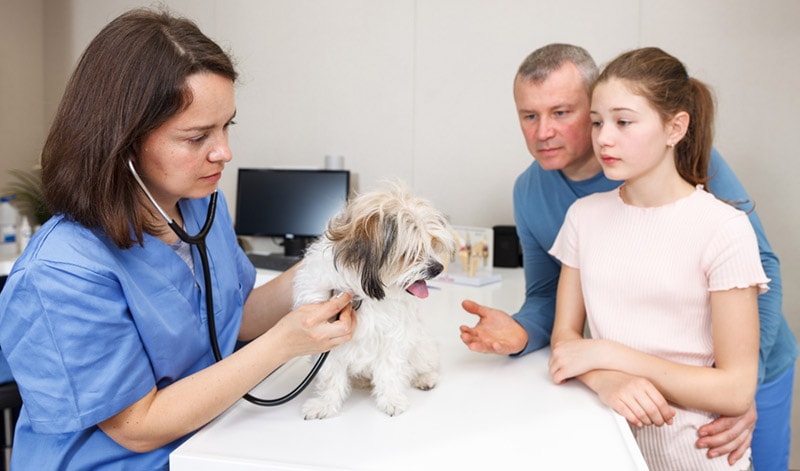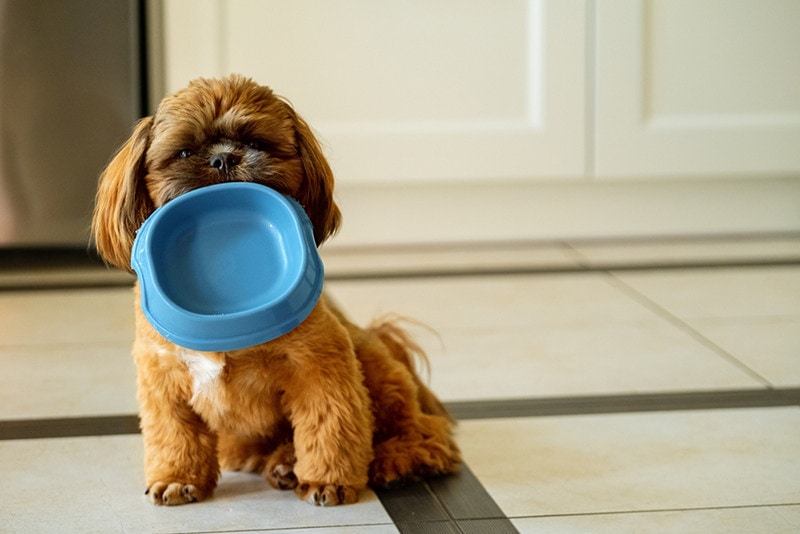Bloodhound vs Coonhound: Differences Explained (With Pictures)

Updated on
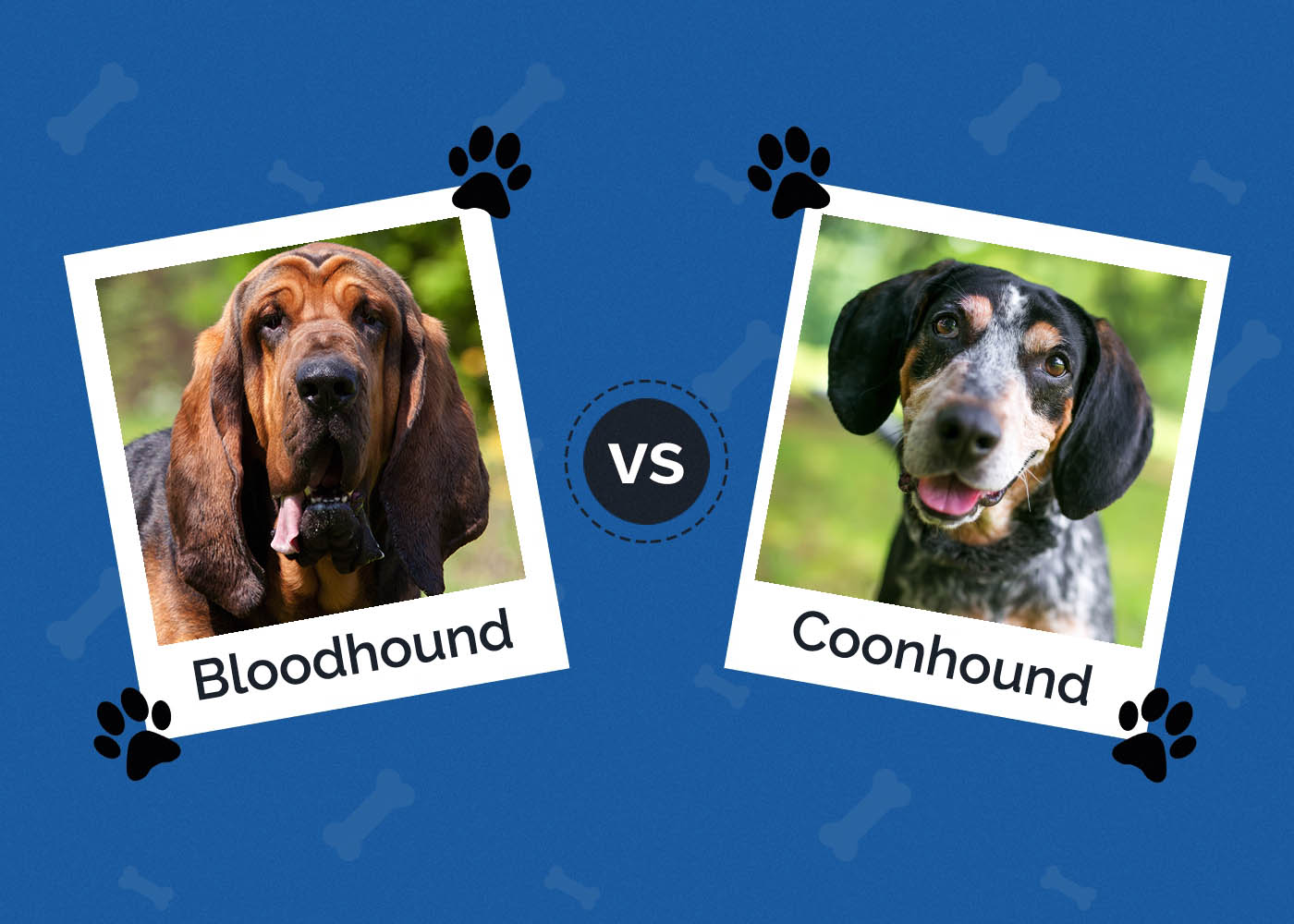
Click to Skip Ahead
Are you a dog lover who can’t decide between a Bloodhound and a Coonhound? Well, look no further. In this article, we will explore the key differences between these two popular breeds, helping you make an informed decision on which one would be the perfect addition to your family. Both the Bloodhound and Coonhound are known for their exceptional scenting abilities, but that’s where the similarities end. From their appearance and temperaments to their exercise needs and trainability, we’ll really delve into every aspect that sets these breeds apart.
Visual Differences

At a Glance
- Average height (adult): 23–27 inches
- Average weight (adult): 90–110 pounds
- Lifespan: 10–12 years
- Exercise: 2+ hours a day
- Grooming needs: Minimal
- Family-friendly: Yes
- Other pet-friendly: Often
- Trainability: Smart but can be hard to train, loyal, tolerant, affectionate
- Average height (adult): 22–27 inches
- Average weight (adult): 45–80 pounds
- Lifespan: 10–12 years
- Exercise: 1+ hours a day
- Grooming needs: Minimal
- Family-friendly: Yes
- Other pet-friendly: Often
- Trainability: Intelligent but hard to train, responsive, friendly, independent
Bloodhound Overview
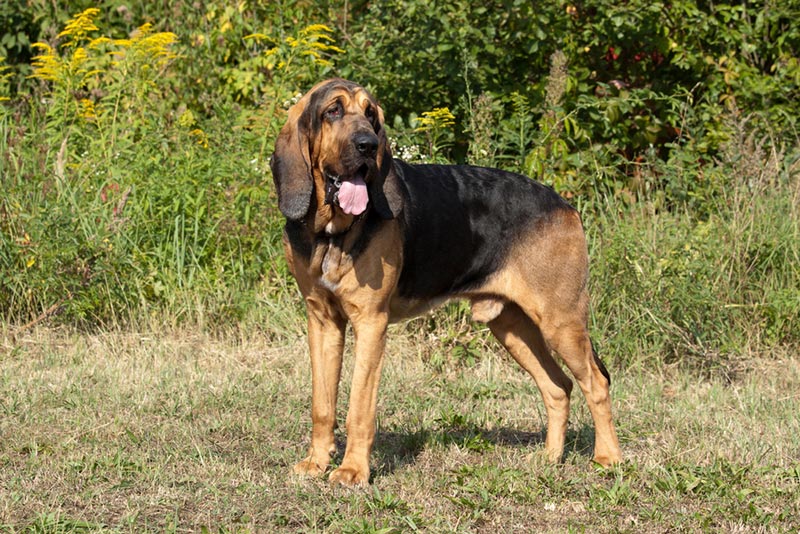
Although the exact origins of the Bloodhound aren’t known, they’re believed to have actually originated in medieval France. The Bloodhound was initially bred for hunting purposes, specifically for tracking and trailing game. Their exceptional sense of smell and tracking abilities made them the perfect companion for hunters.
The Bloodhound’s name is derived from their noble bloodline and outstanding hunting skills. The dog was highly valued by the French nobility and was often gifted as a token of appreciation. The breed’s popularity quickly spread throughout Europe, and it eventually made its way to England.
In England, the Bloodhound’s hunting abilities were further refined, and they became renowned for their remarkable scenting skills. This led to the breed being used by law enforcement agencies for tracking down criminals and missing persons. The Bloodhound’s accuracy and persistence in following a scent trail earned it the nickname “Sleuth Hound.”
Over time, the Bloodhound’s popularity as a hunting dog declined, but their reputation as a search and rescue dog continued to grow. Today, Bloodhounds are still widely used in search and rescue operations, as well as in tracking down escaped prisoners or missing individuals.
Personality
Bloodhounds are often described as gentle, affectionate, and even-tempered. These dogs are known for their loyalty and devotion to their families, making them fun companions and really good family pets. They’re also known for their intelligence, although they can be strong-willed at times. They have a strong sense of smell and are often used in search and rescue operations or as tracking dogs.
Despite their size and strength, Bloodhounds are typically very patient and gentle with children, making them a great choice for families with young kids. They are also known for their calm and laid-back nature, often enjoying lounging around the house or going for leisurely walks. Overall, the Bloodhound’s personality is surprisingly one of a gentle and loyal companion, which is why though they’ve declined in popularity, they’re still a favorite in many parts of the world.

Training
Bloodhounds are known for their exceptional tracking abilities, as they’ve been bred for centuries to scent and trail. This means that their training should focus on harnessing and refining these natural abilities. A Bloodhound’s training should begin at an early age, as they can be strong-willed and independent – i.e., super stubborn. Consistency and establishment as the dog’s leader are key to successfully training a bloodhound.
Tracking
One aspect of training a Bloodhound is teaching them to track scents. This can be done by starting with simple exercises where the dog is encouraged to follow a scent trail. As they progress, the difficulty and complexity of the trails can be increased. It’s crucial to praise and reward the Bloodhound for successfully following the scent, as this will reinforce the behavior. Additionally, incorporating obedience training into their routine will help establish boundaries and ensure that they can be controlled when needed.
Socialization
Another important aspect of training a Bloodhound is socialization. Believe it or not, these dogs can be prone to shyness and fearfulness, so exposing them to different people, animals, and environments from a young age is crucial. This will help them become well-rounded and confident dogs. So regular socialization outings, like visits to parks or attending training classes, can provide opportunities for the Bloodhound to interact with others in a controlled environment.

Health Concerns
One of the major health issues that Bloodhounds are prone to is bloat, also known as gastric dilatation-volvulus (GDV). This condition occurs when the stomach fills with gas and twists on itself, cutting off blood flow and potentially leading to organ damage or death if not treated promptly. Note that Bloodhounds are deep-chested dogs, making them more susceptible to bloat. Feeding them smaller meals throughout the day and avoiding exercise right after meals can help prevent this life-threatening condition.
Entropion and Ectropion
Bloodhounds are also known to have a higher risk of developing certain eye conditions, such as entropion and ectropion. Entropion is when the eyelid rolls inward, causing the eyelashes to rub against the eye. Ectropion, on the other hand, is when the eyelid droops outward, leaving the eye exposed and prone to irritation. Regular eye exams and prompt treatment can help prevent discomfort and potential vision problems in Bloodhounds.
Ear Infections
In addition to these major health issues, Bloodhounds are also prone to several minor health problems. One such issue is ear infections. The long, droopy ears of Bloodhounds can trap moisture and create a favorable environment for bacteria and yeast to grow. Regular cleaning and drying of the ears can help prevent infections. It’s also important to monitor for any signs of discomfort, such as scratching or shaking of the head.
Skin Issues
Skin issues are another common minor health problem in Bloodhounds. Their loose skin can be prone to various dermatological conditions, including allergies and hot spots. Regular grooming, keeping the skin clean and dry, and addressing any allergies or sensitivities can help maintain healthy skin in Bloodhounds. It’s essential to pay attention to any signs of irritation or infection, such as itching, redness, or noticeable hair loss.
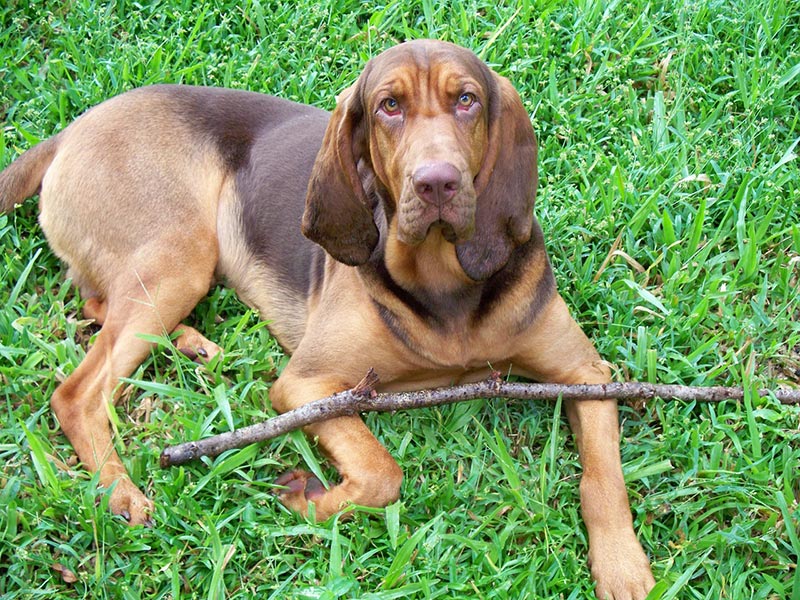
Exercise
Due to their size and energy levels, Bloodhounds require a significant amount of exercise to maintain their physical and mental well-being. It’s recommended that these dogs receive at least 1 to 2 hours of exercise every day. This can be in the form of brisk walks, runs, or playtime in a securely fenced yard. Bloodhounds also benefit from activities that stimulate their sense of smell, such as scent games or tracking exercises. Engaging in regular exercise helps prevent obesity and reduces the risk of certain health issues that can occur in sedentary dogs. But remember that each bloodhound is unique, and exercise needs may vary depending on factors such as age, health, and individual temperament.
Suitable For:
Bloodhounds are suitable for owners who are patient and consistent and who can provide them with the necessary mental and physical stimulation. Also, they’re a large and rather powerful breed, so they require an owner who is physically capable of handling them. Bloodhounds have a tendency to drool and can be messy eaters, so an owner who doesn’t mind a bit of slobber and is willing to keep up with regular grooming is important.
Coonhound Overview
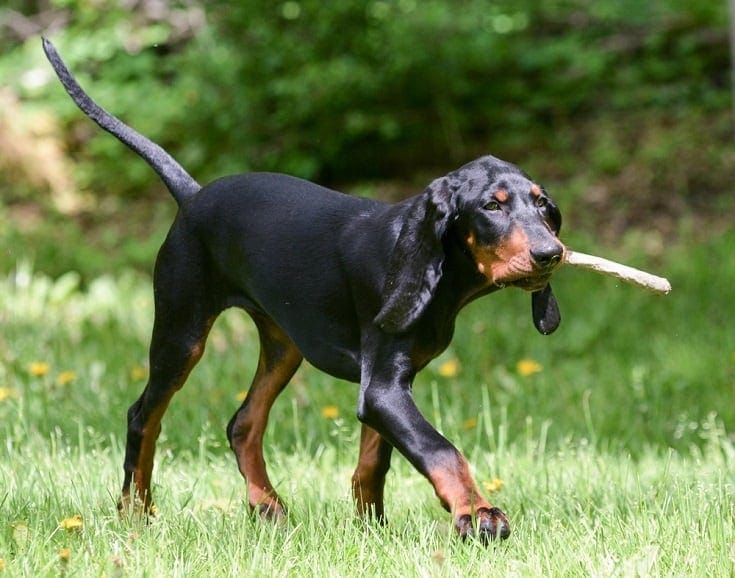
Originally developed in the United States, these dogs were bred specifically for their exceptional hunting abilities. The term “coonhound” actually refers to a group of breeds that were primarily used for tracking and treeing raccoons. While the exact origins of the Coonhound breeds are unclear, many believe that they were developed by crossing various European hound breeds with Native American dogs.
The Coonhound breed became popular in the early 19th century, particularly in the southern parts of the United States where raccoon hunting was prevalent. These dogs were highly valued for their keen sense of smell, strong tracking ability, and determination to chase and tree raccoons. They were often used by hunters to track down and corner raccoons, allowing the hunters to easily capture or kill them.
Over time, different types of Coonhounds emerged, each with their own distinct characteristics and abilities. Some of the well-known Coonhound breeds include the Black and Tan Coonhound, Bluetick Coonhound, Redbone Coonhound, English Coonhound, and Treeing Walker Coonhound. Each breed has its own unique traits and strengths, but all share a common purpose of hunting raccoons.
Personality
Coonhounds are known for their intelligence, loyalty, and determination, which make them excellent hunting dogs. And like Bloodhounds, they too have a super strong sense of smell and are highly skilled at tracking scents, making them ideal for hunting raccoons and other small game. Their high energy levels and stamina also make them great for outdoor activities such as hiking and running.
Coonhounds are known to be really friendly and social dogs, so they also make good family pets as well. They’re often good with children and other animals, although early socialization and training is important to ensure they grow up to be well-behaved, less stubborn, and obedient. With their strong hunting instincts and need for physical activity, Coonhounds require regular exercise and mental stimulation to prevent boredom and destructive behavior – which can be an issue due to their size as adults.

Training
Training a Coonhound dog can be challenging because they’re sort of stubborn, but with the right approach and consistency, it’s definitely achievable. Coonhounds are known for their intelligence and independent nature, which can make training more difficult compared to other breeds. However, this does not mean that Coonhounds cannot be trained effectively. It just requires a bit more patience and dedication from the owner.
Countering Their Natural Instincts
One of the key aspects of training a Coonhound is understanding their natural instincts and drives. Coonhounds have a strong prey drive and were originally bred for hunting, specifically for tracking raccoons. This instinct can sometimes lead to distractions during training sessions, as they may become easily distracted by scents or small animals. So, it’s important for the trainer to be aware of this and find ways to keep the Coonhound focused and engaged during training.
Consistency
Consistency, like with any breed, is another crucial factor in Coonhound training. These dogs respond best to a consistent routine and clear expectations. Establishing a set schedule for training sessions and using positive reinforcement techniques can help reinforce desired behaviors. It’s essential to reward the Coonhound with treats, praise, or playtime whenever they exhibit the desired behavior, as this will help motivate them to continue learning and obeying commands.
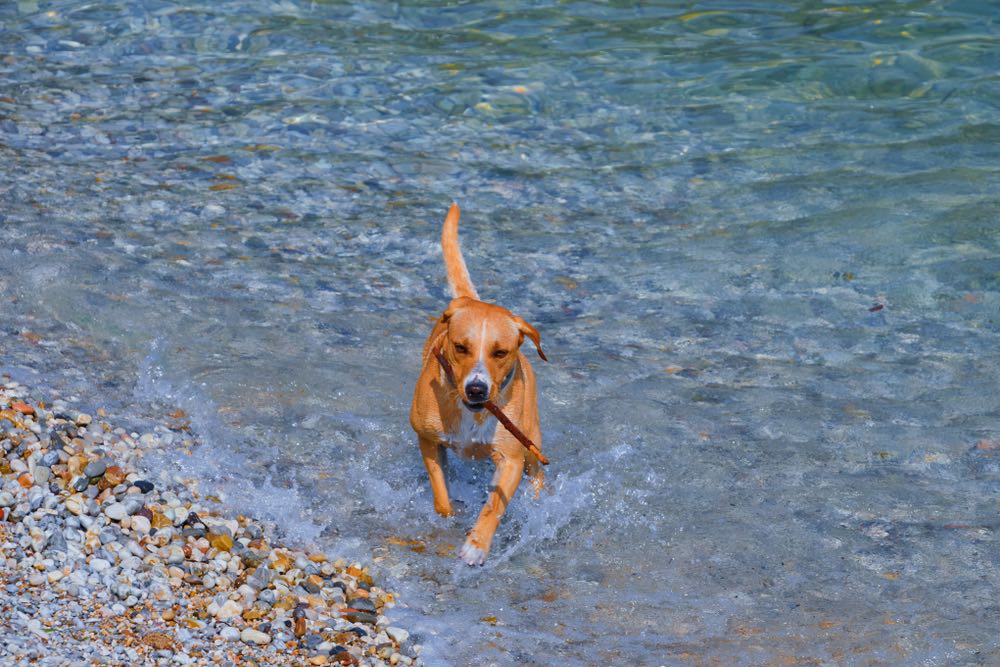
Health Concerns
Ear Infections
A common, though typically minor, health issue in Coonhounds is ear infections. Their long, super-droopy ears (which distinguish them from other breeds) can trap all types of debris, dirt, and moisture, creating an ideal environment for yeast or bacterial infections. Regular cleaning and inspection of the ears can help prevent and detect any signs of infection early on.
Cancers
Coonhounds are also more susceptible to certain types of cancers, such as lymphoma and mast cell tumors. Regular veterinary check-ups and monitoring for any abnormal lumps or bumps on the dog’s body are important for early detection and treatment. Other common health issues in Coonhounds include hypothyroidism, which affects the thyroid gland and can lead to weight gain, lethargy, and skin problems, and eye conditions such as cataracts and progressive retinal atrophy.
Bloat
Like Bloodhounds, Coonhound dogs are prone to developing bloat, also known as gastric dilatation-volvulus (GDV). Immediate veterinary attention is required if bloat is suspected.
Exercise
Being that these dogs were bred for hunting and tracking, they have a natural inclination towards physical activity. While the exact amount of exercise needed for a Coonhound may vary based on factors (like age and health), it’s best to provide at least 45–60 minutes of exercise each day.
Regular exercise helps to keep Coonhounds physically fit and mentally stimulated. It also helps to prevent behaviors like excessive barking or destructive chewing that may result from pent-up energy. Coonhounds are active dogs that enjoy activities such as walking, running, hiking, and playing fetch. Engaging in these types of activities not only provides them with the physical exercise they need but also allows them to explore their environment and satisfy their natural instincts.
In addition to regular exercise, it is important to provide Coonhounds with mental stimulation. These dogs are very smart and absolutely need mental challenges to keep them engaged and prevent boredom. So, activities such as puzzle toys, obedience training, and scent work can help stimulate their minds and provide them with an outlet for their energy. And it’s worth noting that Coonhounds are prone to obesity if not given adequate exercise. Obesity can lead to various health issues, including joint problems and heart disease.
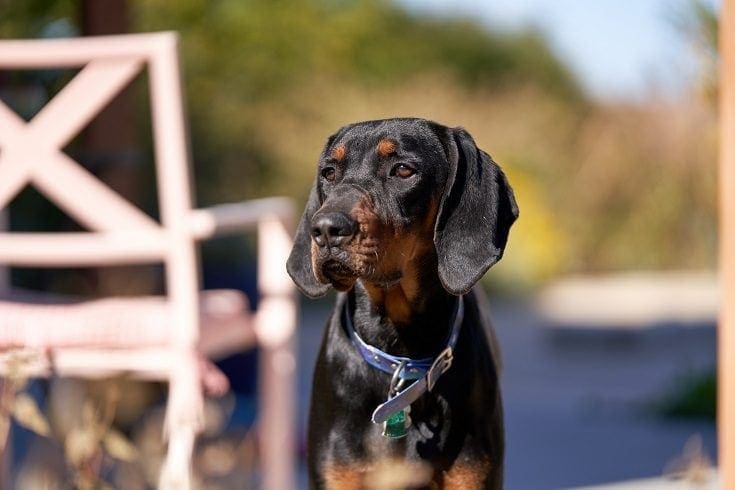
Suitable For:
The Coonhound dog breed is best suited for owners who have an active lifestyle and enjoy spending time outdoors. These dogs require plenty of exercise and mental stimulation, as they’re very social and thrive in homes where they receive lots of attention and companionship. They are intelligent and eager to please, making them a good fit for owners who are willing to provide consistent training and structure.
Which Breed Is Right for You?
When deciding on the best dog breed for you, it’s important to consider factors such as your lifestyle, living environment, and personal preferences. Both the Bloodhound and Coonhound are popular breeds known for their tracking abilities and loyalty. However, they do have some distinct differences that may influence your decision.
The Bloodhound is a large and gentle breed, known for its exceptional sense of smell and tracking skills. They need ample exercise and mental stimulation to prevent boredom. On the other hand, the Coonhound is a rather versatile breed that comes in different varieties, each with its own unique characteristics. These pups are highly energetic and require regular exercise and training. Ultimately, the best dog breed for you depends on your specific needs and ability to meet the dog’s exercise and training requirements.
Featured Image Credit: (L) Lenkadan, Shutterstock | (R) Mary Swift, Shutterstock



